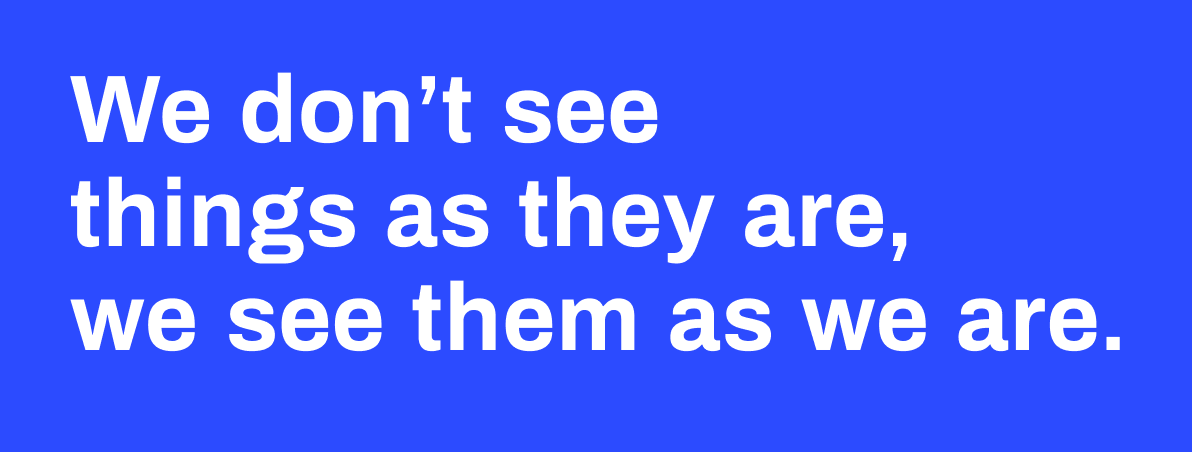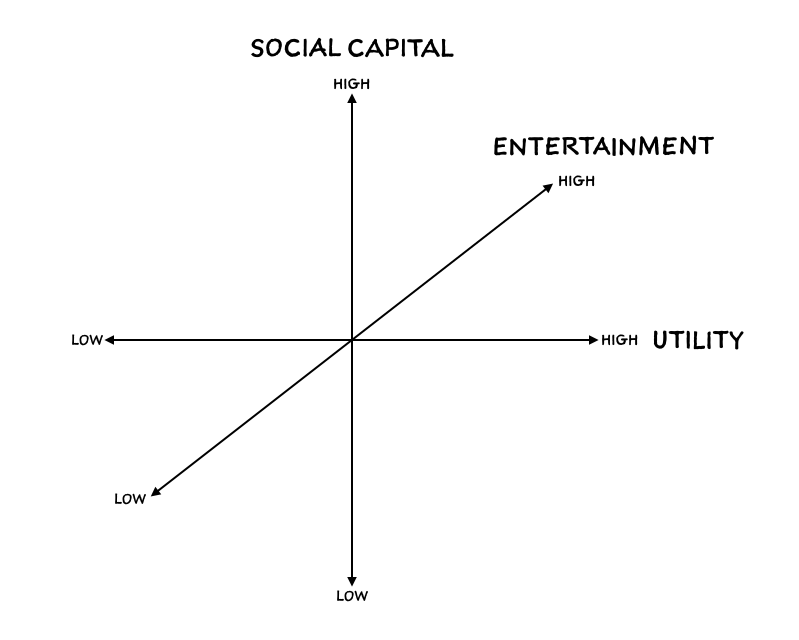I share a weekly update on ways to be a better marketer, brand-maker, team-builder, and person. If you enjoy this, you can share some love by hitting the Substack heart button above or below.
Hi there 👋
I hope your August is off to a good start. I’m away on a summer stay-cation the next couple weeks, so the format of this newsletter might look a little different. I’m reading some random things, so the newsletter might reflect that. Thanks for your understanding, and I hope you have a great week ahead!
~ Kevan

by Anais Nin
#goodreads
Continue, Pivot, or Put It Down — inside the storywriting process of one of my favorite blogs, The Pudding.
These are 80 awesome newsletters run by a single person.
Reminder: Buffer is hosting a new (free) audio conference all about brand-building. Sessions drop on August 19 and 20. We’d love to see you there.
Why TikTok succeeded as the next great social media app … when so many others failed
by Eugene Wei
You probably recognize it as one of the constant questions on those annual list of predictions: Who will join the Facebooks and Instagrams as the next great social media site?
It appears the answer is TikTok.
(Although, as you’ll see below, I would quaver on whether TikTok truly is a social media site.)
The article by Eugene Wei is a fabulous recounting of the TikTok origin story, the nature of product and apps, and the current landscape of social media. Eugene is a former product leader at Amazon, Hulu, Flipboard, and Oculus, and he knows tons of people working for or close to Bytedance, the parent company of TikTok. He’s also just really, really smart.
You can sign up for his emails here.
On the state of social media:
There’s a reason that many people in the U.S. today describe social media as work. And why many, like me, have come to find TikTok a much more fun app to spend time in. Apps like Facebook, Instagram, and Twitter are built on social graphs, and as such, they amplify the scale, ubiquity, and reach of our performative social burden. They struggle to separate their social functions from their entertainment and utility functions, injecting an aspect of social artifice where it never used to exist.
On how your company’s DNA affects what you can (and can’t) build:
Facebook is underrated for its ability to build functional social plumbing at scale, that is a rare design skill. Companies as diverse as Amazon and Netflix have tried building social features and then later abandoned them. I suspect they tried when they didn't have enough users to create breakaway social scale, but it's difficult to imagine them pulling that off without more social DNA. But having a social-first DNA also means that Facebook isn't great at building non-social offerings. Their video or watch tab remains a bizarre and unfocused mess.
On getting a new social network to scale:
To help a network break out from its early adopter group, you need both to bring lots of new people/subcultures into the app—that’s where the massive marketing spend helps—but also ways to help these disparate groups to 1) find each other quickly and 2) branch off into their own spaces.
Here’s what I found most interesting.
How did TikTok get so big so fast?
Two factors:
TikTok spent a TON of money on advertising — some months over $100 million dollars.
TikTok built an extremely interesting, fully custom For You page for every user (based on an algorithm of course)
Of these two, the algorithm is the real superstar. The team at Bytedance, TikTok’s parent company, is renowned for their algorithms, which they’ve built into similarly prescient, addicting apps for news and music. The algorithm helped build TikTok into an interest network, a.k.a. a network that shows people more of what they’re interested in. Other networks show you things based on who you follow or what topics you’ve stated you’re interested in. TikTok shows you more of what you’ve proven to be interested in based on your behaviors in the app. The algorithm is an exploit algorithm, which is designed to give you more of what you like (versus an explore algorithm).
Wait … there are two different types of algorithms?
Apparently!
Exploit algorithms give you more of the content you like
Explore algorithms give you a broader set of content based on what you like
YouTube is a prime example of an exploit algorithm. You watch a late night clip, your home page fills with other late night clips.
Is TikTok a social network? Not really.
TikTok often gets lumped into the conversation with Facebook, Instagram, and Twitter as a social network. But something seems off, right?
Is TikTok a social network?
Is Pinterest?
Is YouTube?
I guess it all depends on the definition. If you believe that a social network’s primary purpose is to help you connect with other people, then I don’t think TikTok, Pinterest, or YouTube would qualify (Pinterest would be the closest, in my opinion).
Eugene’s article adds another great layer to this discussion. He sees three purposes that distinguish networks:
Social capital
Entertainment
Utility
All networks do some of all three purposes, but most lean heavily in one direction.

A network like Venmo or Uber, for example, is mostly about utility: I need to pay someone money, or I need to travel from here to there. A network like YouTube is more about entertainment. Amuse me. And some networks, what most people refer to when they use the generic term “social network,” are more focused on social capital. Soho Club, for example.
TikTok is less a pure social network, the type focused on social capital, than an entertainment network. I don’t socialize with people on TikTok, I barely know any of them. It consists of a network of people connected to each other, but they are connected for a distinct reason, for creators to reach viewers with their short videos
When will Buffer add TikTok?
We don’t get this question too often just yet (we get asked about YouTube from time-to-time). As a social media management platform, we let you connect to Instagram, Facebook, Twitter, LinkedIn, and Pinterest.
But if TikTok isn’t a true social network, then does it make sense to include it inside a social media management platform?
Another way to think about this might be to consider the personas. What do all these different sites have in common? They serve three distinct groups:
Consumers, people like you and me
Influencers and celebrities
Brands
(You could also say: consumers, creators, advertisers.)
Regardless of whether the site is about social capital, entertainment, or utility, these groups of people and businesses exist in these ecosystems. And brands (also, to a certain degree, the creators) are who Buffer serves. If we were to add TikTok to Buffer, it may be in service of the same groups we serve with Instagram, Facebook, and the like, but the use case — entertainment, video — would likely require some product evolution.
tl;dr of why TikTok succeeded
In a two-sided entertainment marketplace, they provide creators on one side with unmatched video creation tools coupled with potential super-scaled distribution, and viewers on the other side with an endless stream of entertainment that gets more personalized with time.
Thanks so much for reading. Have a great week!
— Kevan
P.S. If you liked this email and have a quick moment, could you click the heart button below? It’d mean a ton to me and might help surface this newsletter for others. Thank you!


